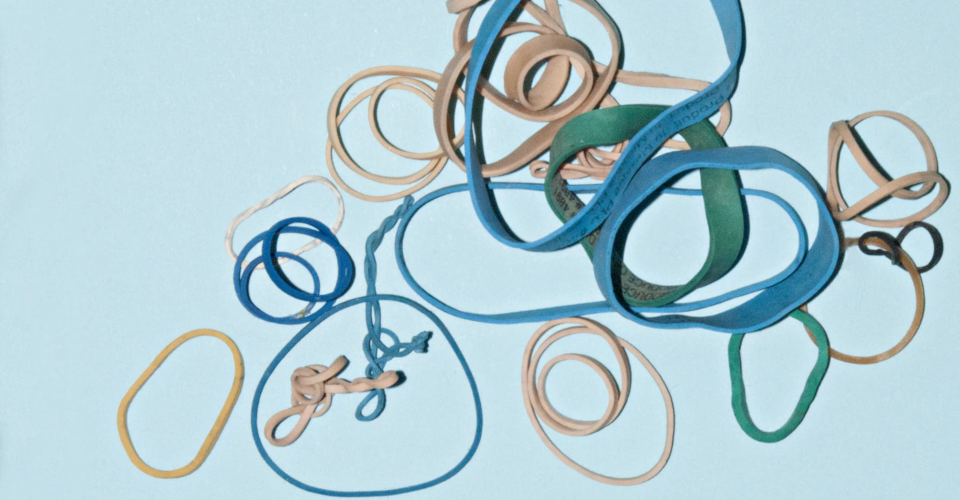Can You 3D Print With Rubber?
As one of the most widely used materials in the world, rubber offers a laundry list of desirable characteristics. It is waterproof, easy to process, chemically resistant, and relatively inexpensive. Its extreme resilience is probably its most distinguishing trait. Rubber, in most of its processed forms, is highly impact resistant and resists permanent deformation.
Given how good a material rubber is, it’s not surprising to see that the field of 3D printing also wants to harness its benefits. How viable is it to make custom 3D printed projects using real rubber? Conversely, are there rubber-like materials that can serve as convenient alternatives?
Can we 3D print with real rubber?
If we’re talking about the same rubber used in car tires, then no, there is currently no way to 3D printing with that material. This is less a limitation of 3D printing technology but rather of the process that makes it possible to produce rubber as are familiar with it.
To better understand this limitation, it would be good to look at how rubber is made. While there are several different types of rubber used nowadays, most of them can be classified as coming from latex, a sticky and milky liquid extracted from rubber trees.
Obviously, liquid latex has to go through intensive processing before it becomes the type of rubber we see or use every day. The most essential step in the whole process is called vulcanization. A staple of the rubber industry, vulcanization involves the combination of natural rubber with other components (typically sulfur) that result in hardened rubber products.
The exact mechanism of the process varies slightly between different additives, but all of them are based on the cross-linking of polymer chains in the rubber compound. Through this diversification, vulcanizing can be controlled to yield different grades and varieties of hardened rubber.
In contrast to the thermoplastics used in 3D printing like ABS and PLA, rubber is an example of a thermosetting polymer. This means that rubber, once it has hardened, can no longer be converted back to its semi-liquid form. The vulcanization process, in particular, is referred to as an irreversible curing process. This limitation is what makes it impossible to 3D print with real rubber.
What materials can mimic the properties of rubber?
The aspiration to 3D print with rubber is not based on an objective to print with actual rubber, but rather to benefit from the desirable rubber-like characteristics in 3D printed products. Fortunately, some thermoplastics approximate the behavior of rubber.
Two options satisfy this condition: Thermoplastic Polyurethane (TPU) and Thermoplastic Elastomer (TPE). There may be some confusion between the two terms because they are essentially the same thing. TPE refers to a broad classification of flexible polymers, of which TPU is just one example.
Commercially available filaments are called either one of the two terms, so we’ll stick to these names. There should technically be no difference between TPU or TPE. However, in the 3D printing parlance, TPU can sometimes be indicative of a filament that is slightly more rigid than TPE.
Whether you choose to use TPU or TPE, either filament type offers characteristics that mimic that of natural rubber. Here are some of their defining traits:
Flexible
Just like rubber, TPU and TPE can be stretched and compressed to a great extent without suffering permanent deformation. This makes flexible filaments excellent for applications that require a lot of movement such as in sports equipment, footwear, clothing, pipe fittings, or automobile components. Although the flexibility of TPU and TPE are considered beneficial in the end-product, they can also make them quite challenging to work with as we shall discuss later on.
Impact-resistant
Being very flexible materials, TPU and TPE do an excellent job in dispersing any impact that they receive. This makes them ideal as protective sleeves and cases for electronic devices. Flexible materials also work well as grips for hand tools as they absorb impact during tool use, protecting the user from long-term injury and discomfort.
Anti-slip properties
Like rubber, TPU and TPE exhibit very high friction coefficients. This means that they will require a larger amount of force before they will slip across a surface. For this reason, flexible materials are often used as lining for tools, sports equipment, kitchen utensils, and household furnishings.
In almost all cases, the beneficial characteristics of either TPE or TPU aren’t quite equal to those of rubber. However, they approximate these properties just enough to make them worthy of being called ‘rubber-like.’ In the world of 3D printing, there are no other options for filament materials that come close to the behavior of real rubber.
Challenges of 3D printing with flexible filaments
If you’ve ever read about flexible filaments before, you probably already know that they aren’t universally regarded as easy materials to work with. Unfortunately, the same characteristics that make them ideal for end-product use also make them a little challenging to use as raw materials. There are also a host of other issues that you will have to deal with when working with flexible filaments.
Tends to deform and buckle
When working with flexible filament, you need to dial in the perfect extruder parameters, lest you end up stretching or compressing the filament. This results in inconsistent extrusion that can affect the quality of the output. In some cases, the deformation inside the extruder assembly can get so bad that you have no choice but to stop 3D printing altogether and feed fresh filament in.
For this reason, many 3D printing experts discourage the use of flexible filaments with Bowden extruders. The longer segment between the extruder gear and the nozzle provides makes the filament behavior a little harder to control. Printing with Bowden extruder is not impossible, but you should have a much easier time working with a direct extruder.
Prone to stringing
When flexible filament like TPE and TPU melts, they tend to get very soft and fluid-like. Although this helps them extrude more consistently, it also means that they are harder to control when the nozzle has to travel across the print bed without extruding. This results in a common 3D printing problem called “stringing” which can ruin the entire print if it gets really bad. If you anticipate having lots of stringing problems with flexible filament, you will likely have to enable retraction in your slicer settings.
Poor bed adhesion
As far as bed adhesion is concerned, there are filaments that are much worse than TPU or TPE. However, flexible filaments also present their fair share of challenges. Make sure to have a heated bed set at the proper temperature when working with either TPU or TPE, as well as the appropriate adhesive aid. You can even consider printing with a brim or raft if none of the other measures work.
All things considered, TPU or TPE is just like any other 3D printing filament. It has unique characteristics that could translate into challenges during the 3D printing process. However, it just takes some experience and a good fundamental understanding of the materials to come up with the best settings to make them work.
Some flexible filaments you can buy today
Flexible filaments are fairly easy to buy nowadays, although there are still only a few brands that offer them. Most of these brands have been in the market long enough that they should deliver predictable 3D printing performance.
1. Ninjaflex TPU Filament
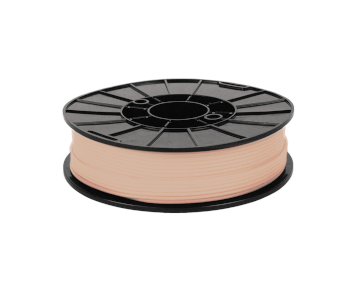
The NinjaFlex line from NinjaTek brand is likely the most popular TPU product line today. NinjaTke claims that the NinjaFlex can stretch up to 660% of its original dimensions without breaking or suffering from permanent deformation. Its 85A shore hardness lies almost exactly at the boundary between what is considered TPU or TPE. If it’s your first time working with flexible filament, then the NinjaFlex line is one of the most versatile and easiest to work with.
One other thing that makes the NinjaFlex very appealing is the fact that it comes in a huge selection of creative and unusual colors. With color names like Mustard, Marsala, and Grass, it’s hard not to buy a spool or two just to try it out.
2. Polymaker PolyFlex TPU Filament
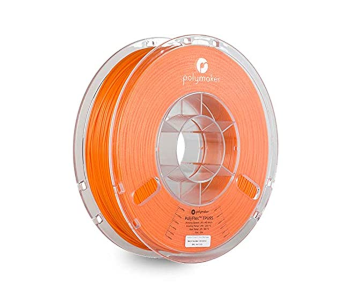
The PolyFlex TPU from Polymaker has a shore hardness value between 90A to 95A, well within the standards for TPU filament. A little less stretchy than NinjaFlex, the PolyFlex line is worth your consideration if you’re looking for a filament that is a bit more rigid and easier to work with.
The PolyFlex line comes with a wide set of basic colors, although the range is nothing as expansive as what NinjaFlex offers. Fairly expensive but reliable, most users of the PolyFlex have been very satisfied with how the filament performs and how clean the output is. If you want your first experience with flexible filaments to be as easy as possible, then the PolyFlex line is a compelling choice.
3. eSun Elastic TPE Filament
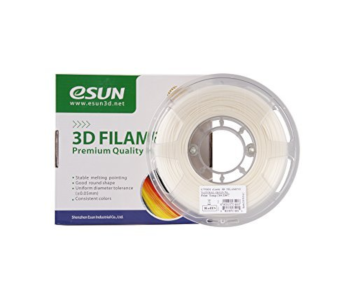
True to the eSun brand, this TPE filament is a low-cost option for flexible filaments. At 85A shore hardness and 30 MPa tensile strength, it’s not quite as rigid or as durable as some of the other more premium options. However, it’s still undoubtedly a flexible filament that is viable for 3D printing rubber-like projects.
Take note that the more flexible nature of the eSun filament will make it a little harder to handle during 3D printing. Issues such as stringing and buckling in the extruder assembly might get magnified. Still, this is a good and affordable option if you have experience in wrangling with flexible filaments.
4. Taulman PCTPE Co-Polymer Filament
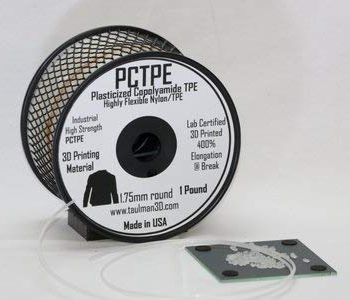
The Taulman PCTPE filament is something we can recommend for those who like to experiment. As its name implies, this filament is made of co-polymer that combined both TPE and Polycarbonate (PC). The result is a filament with the flexibility of TPE and with some of the durability and strength of PC.
User reviews indicate that the PCTPE filament lives up to the promise of a filament that combines the best of both worlds. Unfortunately, this also means that 3D printing with PCTPE comes with the challenges of both PC and TPE materials. This means you’ll have to deal with high printing temperature, warping, stringing, and deformation of the filament inside the extruder assembly. This is quite a handful so we really only recommend this filament for more experienced 3D users or those are fully committed to working with a new and novel filament.
Final thoughts
Rubber is undoubtedly one of the most useful materials ever discovered and enhanced from its natural form. Unfortunately, working with real rubber is still outside of the capabilities of 3D printing technology as we know it nowadays. The best we can do right now is to approximate the characteristics with flexible or rubber-like filaments.
The selection right now is limited to either TPU or TPE – there are only minor differences between the two. While flexible filaments are uniquely challenging as 3D printing materials, it cannot be argued that they also offer unique benefits. If you’ve always wanted to make your very own flexible protective cases or even if you just want to make replacement gaskets for your water pipes, we suggest giving these flexible filaments a spin.

